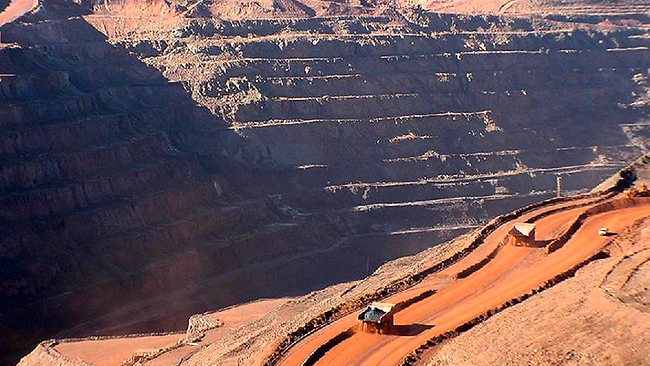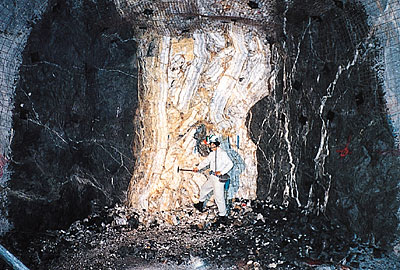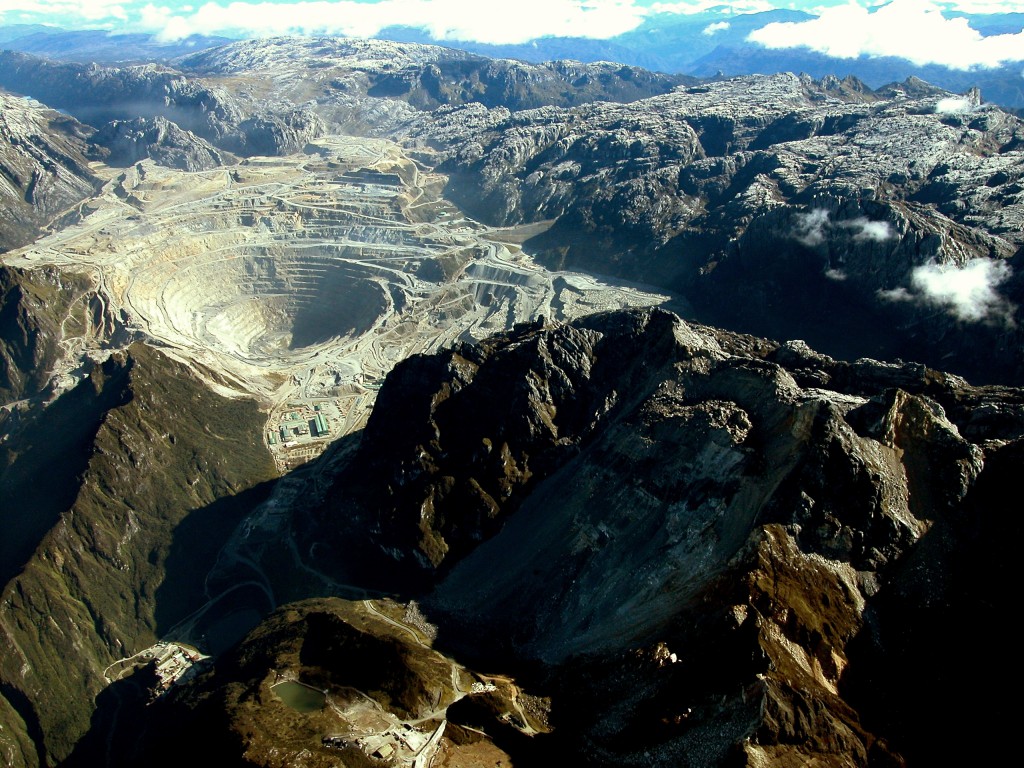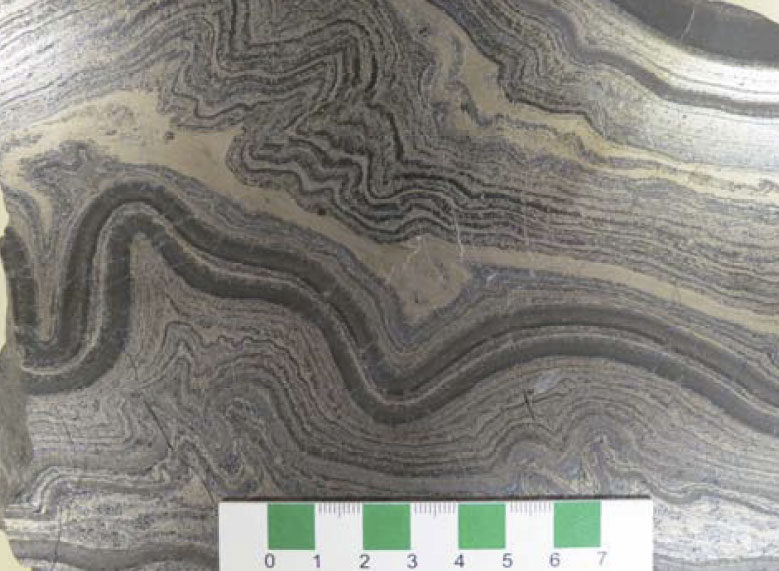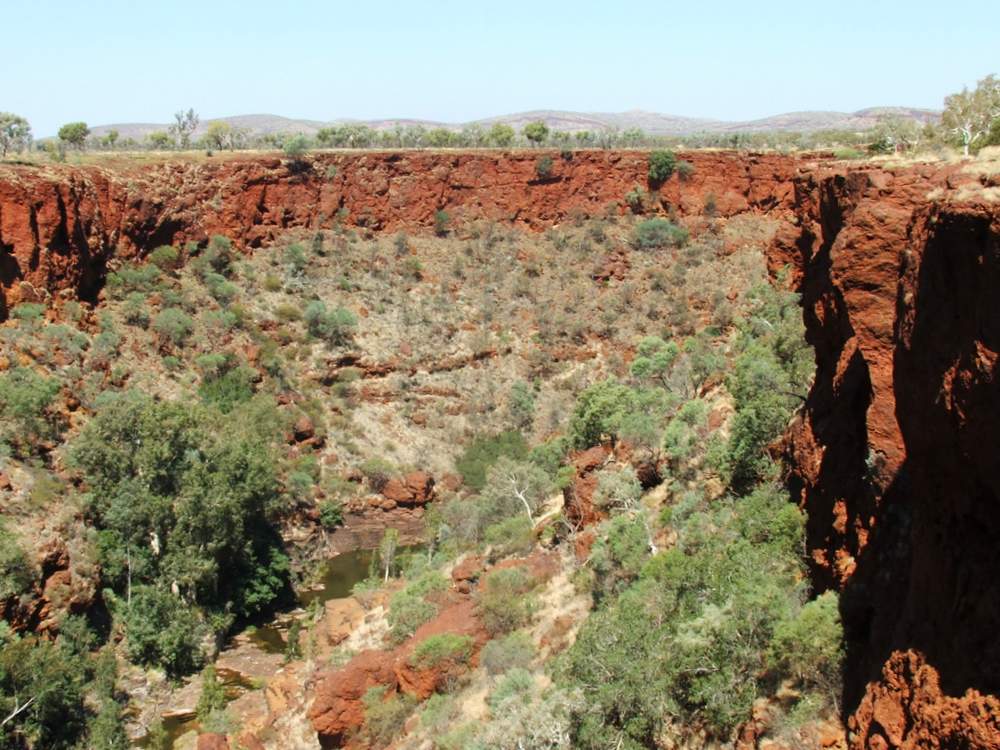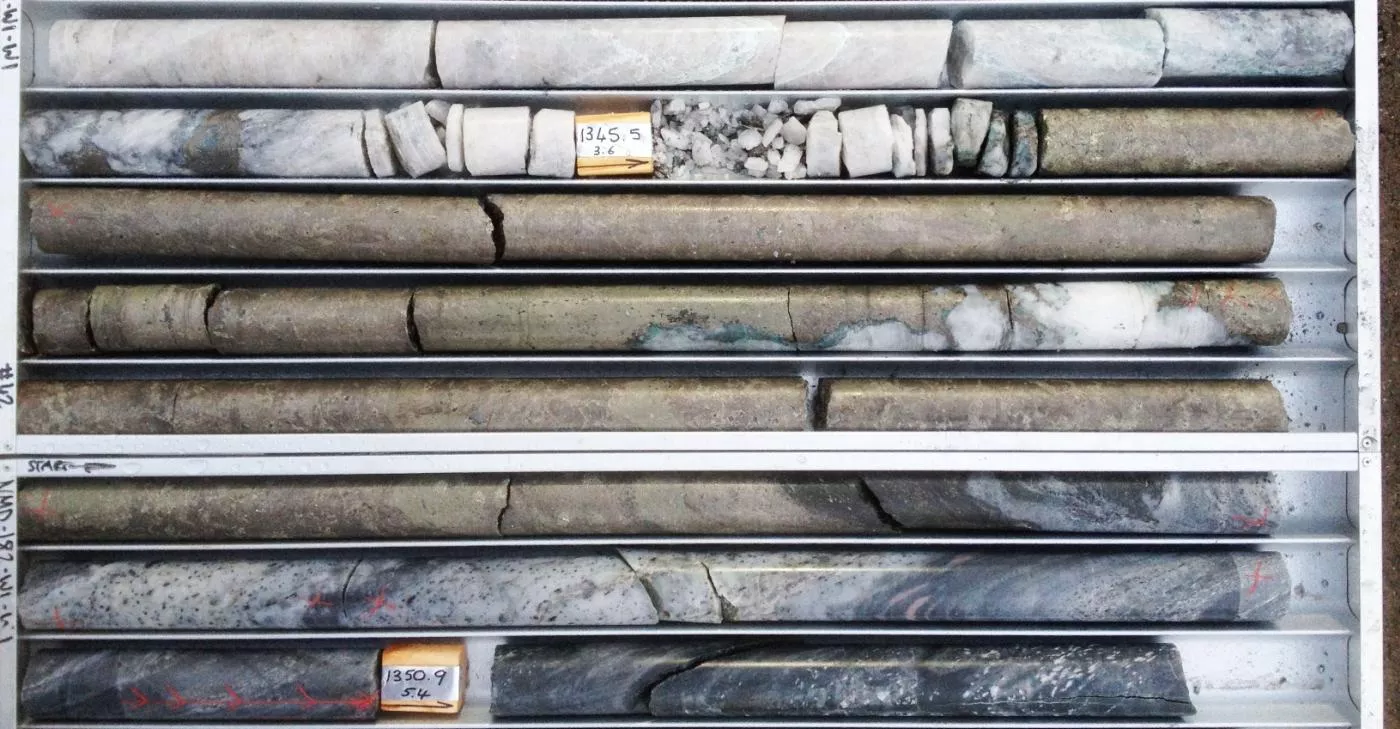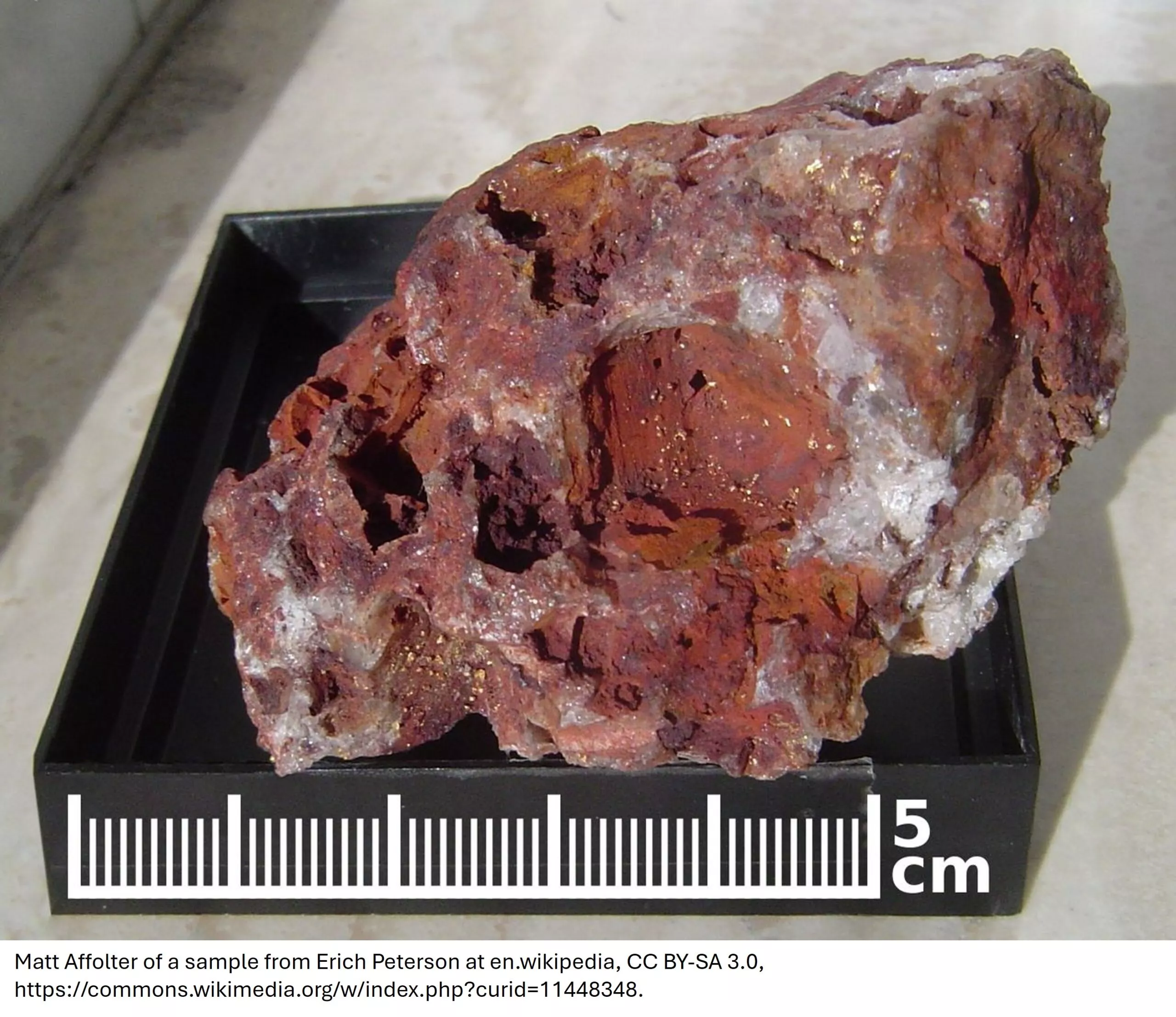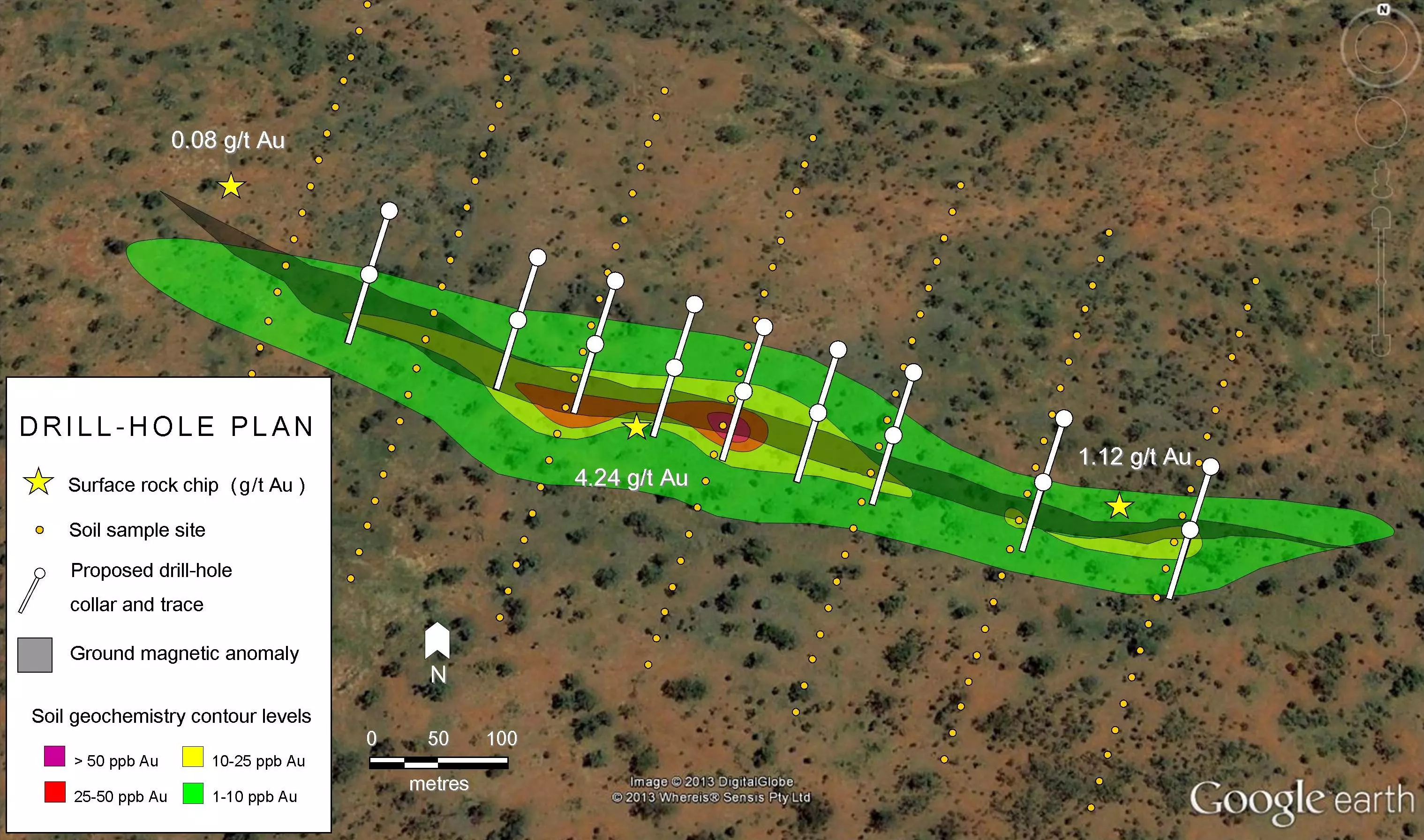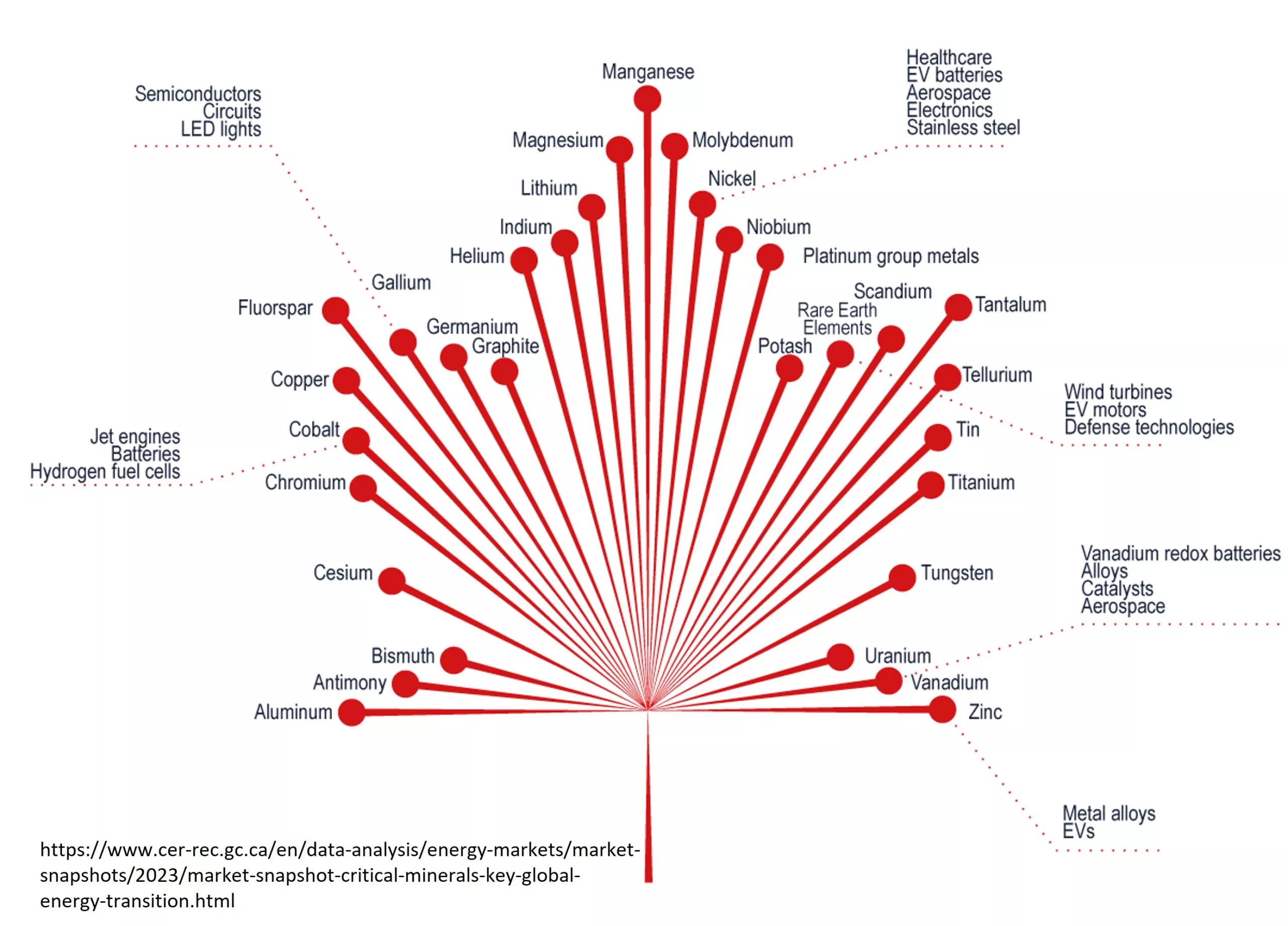Even in a land known for its giant copper deposits, such as Los Pelambres, Andina, Chuqiucamata Collahausi, the La Escondida mine which consists of a series of adjacent porphyry copper deposits stands out as massive deposit. The Global resources is 21.7 Billion tonnes at 0.54 percent Copper including Escondida and adjacent deposits, and the mine and ancillary industries contributes 2.5% to Chile’s GDP. The mine itself excavates and mills some 370 million tonnes per annum shipping over 1 million tonnes of the red metal every year. The ownership of the mine is a joint venture between BHP-Billiton (57.5%), Rio Tinto (30%), a Japanese consortium (10%) and the International Finance Corporation (2.5%). It was put into production in the 1990’s and in 2012 BHP Billiton estimated that there was another 100 years of production. Prior to discovery 5 companies had held the ground previously a not one had drilled a hole before David Lowell came along in 1981 and ran a little drill program and hit 52 metres of 1.51% Copper and discovered the main orebody.
Geology
The deposit is concentrated along a series of apophyses ( small intrusions coming off the top of the main intrusion) on the top of a much larger body at depth. Like many of the other major deposits in Chile, it is Tertiary in age, and owes its preservation to its relatively young age, and the arid environment.
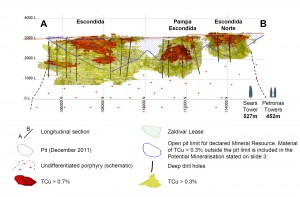
The copper mineralization is divided into two main components a low grade primary sulfide component, and high grade supergene zone, where the primary sulfide ore has been enriched by the leaching of copper from above, and it’s re-deposition over the primary sulfide ore creating a second layer of copper mineralization on top of the primary mineralization. It is this process and the preservation of the supergene caps that creates these massive copper resources. Finally since the deposit is located in such an arid environment there is a large preserved copper oxide resource, formed as the sulfide ore weathered and was redeposited.
Discovery
Generally exploration is an ephemeral science, the guts, characters and detective work relegated to dinners, and barrooms among a diminishing cadre of people who were involved. In this case David Lowell the person who lead the team who discovered the deposit has been extensively interviewed and in particular his recollections on the lead up to the discovery of Escondida are worth quoting.
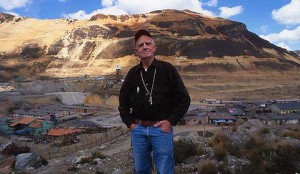
Extract from and interview posted on casey research explorers league http://www.caseyresearch.com/xl/david-lowells-induction-interview
XL(Interviewer): So, when you finally came to Escondida, what made you think that it might be something special?
DL(David Lowell): First of all, the zone of hydrothermal alteration around the deposit was gigantic. It probably had a long dimension of fifty kilometers. There was also some porphyry copper skarn mineralization that cropped out in one place and peripheral small vein deposits. One contained lead and zinc, which is diagnostic of porphyry copper systems. Most of what became the Escondida pit – I was just there last month – was covered. But there were two hills that outcropped, and they had the kind of alteration that we were looking for, but kind of a weird leached surface texture. They were anomalously high in molybdenum, but had weaker copper values. ……… The rock is actually almost totally replaced by salt – my friend coined the term “super-leaching” for the phenomenon. And when this happens, it actually removes many of the normal geologic signs you would look for to signal the presence of copper mineralization. At that time, I had only a hazy understanding of how this worked, but it did provide an explanation as to why the rock had molybdenum but little copper and may have been the key to the discovery. The prospect had been staked by five previous companies, but never drilled probably because of the superleaching interpretation.
However, due to the scale of the alteration and the other signs they made the decision to test undercover. When they started drilling it soon became apparent the massive size of the discovery. They hit on 5 drillholes at depth and were soon able to put together a resource of 230 Million tonnes of 1.5% Copper, and the deposit hasn’t stopped growing since.

